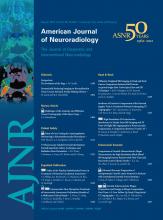We thank Dr Colby and colleagues for their summary of the existing literature as well as their own recent publication of a retrospective, self-adjudicated series of 41 aneurysms in 34 patients treated with the Pipeline Embolization Device (PED; Chestnut Medical Technologies, Menlo Park, California), in which they observed no parenchymal hemorrhages.1 They did observe 1 fatal subarachnoid hemorrhage, which they attributed to spontaneous rupture of a previously unruptured 3-mm paraclinoid aneurysm after treatment, and 1 ischemic stroke, for an overall permanent neurologic complication rate of 6%. With respect to selection, half (51%) of the aneurysms in this series were small (<10 mm), and the average size was only 11.4 mm. This average is likely skewed by the subset of larger extradural aneurysms, which constituted one-third of their series. Thus, this series represents a substantial extrapolation from the existing trial data supporting the application of the PED and its labeled indications for use.
While Dr Colby and associates have observed no delayed ipsilateral parenchymal hemorrhages in their series, they are at an early stage in their Pipeline experience. On the basis of 34 cases with no hemorrhages, the 95% confidence intervals for a zero percent incidence of delayed hemorrhage are as high as 8.8%. If 1 hemorrhage occurs during their next case, the rate at their institution will be 3% (ie, triple their expected rate based on composite self-adjudicated “literature”).
Given the limitations involved with self-reported retrospective series, we think that the best data to analyze are from independently adjudicated clinical trials like Pipeline for Uncoilable and Failed Aneurysms (PUFS) and Complete Occlusion of Coilable Intracranial Aneurysms. In these studies of anterior circulation aneurysms, the overall rate of parenchymal hemorrhage was 5.2% (6 hemorrhages in 116 patients)—not very different from our observed incidence (FDA Executive Summary of PUFS).2 It is difficult to imagine how patient selection was an issue with these subjects because their inclusion in the trial was based on predefined inclusion and exclusion criteria. In addition, it is difficult to argue that technical expertise or bad judgment played a role within these trials, which included only the most experienced operators in the world. The observation that these hemorrhages were all ipsilateral to the treated aneurysm is an important and compelling finding that is difficult to ignore. This pattern strongly suggests that these events are somehow related to the procedure and/or device rather than just attributable to dual antiplatelet therapy. The timeframe during which they occur—days to weeks after treatment—and the observation that the affected patients have typically been neurologically normal for days preceding the ictus essentially excludes a simple mechanical explanation such as a distal wire perforation or a problem related to “vessel manipulation.”
Delayed ipsilateral parenchymal hemorrhage is a relatively novel complication observed in a new class of interventional devices. We must continue to evaluate these cases for commonalities and search for plausible explanations. Only by identifying the root causes of this complication will we be able to enact procedures to avoid it and optimize the application of this technology. Claiming that it will never happen to me because I am careful does little to advance our understanding of this phenomenon and is a disservice to future patients.
- © 2012 by American Journal of Neuroradiology












